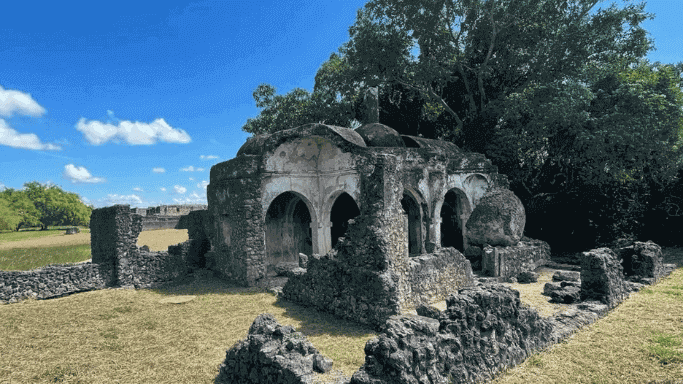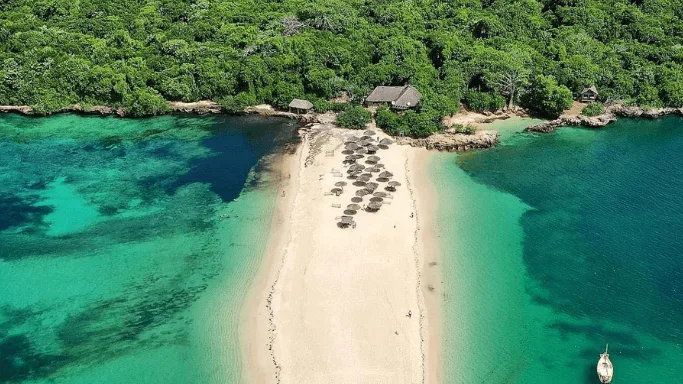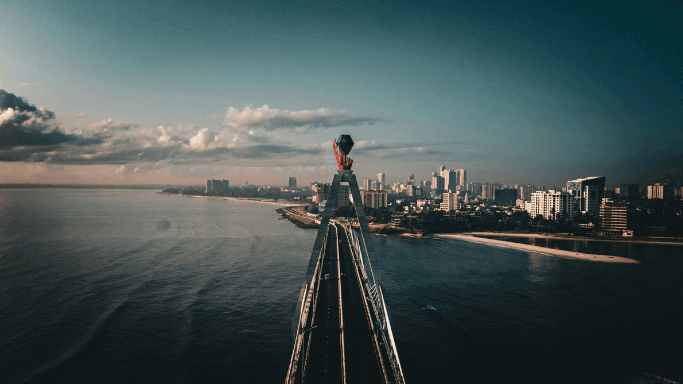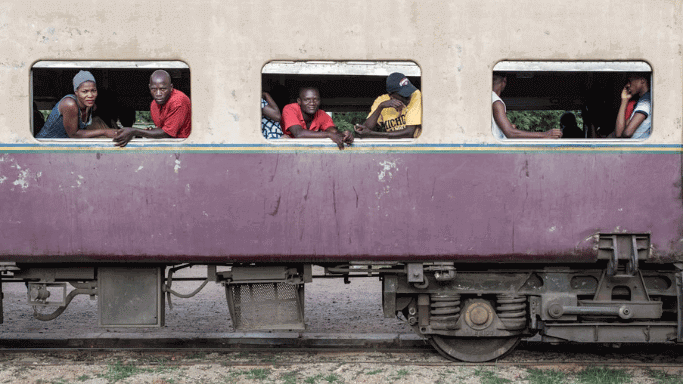Introduction
Kilwa Kisiwani is an ancient island city off the coast of Tanzania, once a powerful trade hub in East Africa. It was one of the most influential Swahili city-states from the 9th to the 19th century. The island is famous for its rich history, remarkable ruins, and role in global trade. Today, it is a UNESCO World Heritage Site and a must-visit destination for history lovers.
Where is Kilwa Kisiwani? (Kilwa Kisiwani on a Map)

Kilwa Kisiwani is an island off the southern coast of Tanzania, about 300 km south of Dar es Salaam in the Lindi region. It is part of the Kilwa Archipelago, surrounded by the Indian Ocean and accessible by boat from Kilwa Masokoon the mainland.
- To the north, it is bordered by Kilwa Masoko, the main town where visitors take boats to the island.
- To the south, it faces Sanje ya Kati, another coastal area in the Kilwa region.
- To the southeast, it is close to Songo Mnara, an island with historic Swahili ruins similar to those on Kilwa Kisiwani.
- To the west, it faces Kilwa Kivinje, a historical trading town on the Tanzanian mainland.
- To the east, the island meets the Indian Ocean, which connected Kilwa Kisiwani to trade routes with Arabia, India, and China for centuries.
Kilwa Kisiwani’s strategic location made it one of the most influential Swahili city-states, controlling regional and international trade along the East African coast.
The Meaning and Origins of Kilwa Kisiwani (Kilwa Kisiwani Meaning)

The name Kilwa Kisiwani originates from Portuguese and Swahili influences. Early Portuguese travel accounts referred to the medieval city-state as Quiloa, which later became Kilwa. The word Kisiwani means “island” in Swahili, signifying its geographic location.
Kilwa Kisiwani was a thriving trade hub, and its name reflects this history. Some sources suggest that “Kilwa” may also mean “balance” or “trade weight” Derived from ‘kylw’ from Arabic language, emphasizing its economic significance.
The nearby island Songo Mnara derives its name from the Wasongo people, the local natives of the region, while Mnara means “pillar” in Swahili. This historical connection highlights the deep-rooted Swahili culture and trade legacy of the region.
History of Kilwa Kisiwani
Kilwa Kisiwani from 800 AD
Kilwa Kisiwani was first settled around 800 AD and became one of the most powerful trading centers on the East African coast by 1320. It was an important hub for Indian Ocean trade, supplying timber, ivory, and gold to Arabia, the Persian Gulf, India, and China. Trade also extended north to Egypt and Mediterranean countries, while Kilwa controlled the southern coast as far as Sofala, a port in present-day Mozambique that exported gold from Zimbabwe.
By the 15th century, Kilwa began to lose influence due to competition from Mombasa and Malindi. In 1505, the Portuguese invaded, built a fortress, and took control of the island. However, after a brief occupation, they left, and much of the fortress was destroyed. The current structure dates back to the early 1800s, when the Omani rulers from Zanzibar expanded their control.
One of Kilwa’s most famous landmarks is the Great Mosque, originally built in the 11th century and later expanded. The mosque has largely retained its original design, making it one of the most important historical sites in East Africa. By 1840, Kilwa’s last Sultan was deported to Oman, marking the end of its rule and influence. Today, the ruins of Kilwa Kisiwani stand as a reminder of its rich history as a powerful Swahili trading city.
The Conservation History of Kilwa Kisiwani
The conservation of Kilwa Kisiwani began in the early 1900s during German colonial rule. In 1902, a protected zone was created to safeguard important sites like Husuni Kubwa, Husuni Ndogo, Makutani Palace, and Malindi Cemetery. However, conservation efforts were delayed due to World War I.
In 1937, Kilwa Kisiwani was officially declared a national monument, leading to early restoration efforts focused on cleaning the site and repairing damaged walls. Later, from 1952 to 1965, conservation work expanded under Neville Chittick and the British Institute in Eastern Africa, focusing on major historical buildings.
After Tanzania gained independence, Kilwa Kisiwani was protected under the Antiquities Act of 1964, ensuring legal protection for both the ruins and their surroundings. In 1981, it was recognized as a UNESCO World Heritage Site. However, over time, coastal erosion, plant overgrowth, and structural damage put the site at risk, leading to its addition to the World Heritage in Danger list in 2004.

To restore Kilwa Kisiwani, major conservation efforts were launched, including the Kilwa Project (2002-2004), which focused on preserving the Great Mosque and Small Dome Mosque. International support from Japan and France also helped train local youth in conservation work and fund structural repairs.
By 2014, after years of restoration, Kilwa Kisiwani was removed from the Danger List, securing its future as one of Africa’s most important historical sites. Today, conservation efforts continue to protect its rich cultural heritage for future generations.
Kilwa Kisiwani’s Architecture – A Blend of Cultures
Kilwa Kisiwani’s architecture is a remarkable fusion of Swahili, Islamic, and local construction techniques, reflecting its status as a major trade hub along the East African coast. While many of its structures, including mosques and tombs, follow Islamic traditions, they are not direct replicas of Arabian or Persian buildings. Instead, they showcase a distinct Swahili architectural style, developed through centuries of local innovation and adaptation.

One of the most iconic structures on Kilwa Kisiwani island is the Great Mosque of Kilwa, built in the 11th century. It is the oldest standing mosque in East Africa and once had the largest dome in the region until the 19th century. The mosque features sixteen domed and vaulted bays, a design unique to Swahili architecture. Over time, the mosque underwent several expansions, reflecting Kilwa’s economic and cultural growth.
In addition to religious structures, Kilwa Kisiwani is home to impressive stone-built palaces, residential buildings, and defensive forts. The Gereza Fort, initially built by the Portuguese in 1505, was later modified by Omani rulers in the 18th century, incorporating zigzag decorations and Arabic inscriptions. The Husuni Kubwa Palace, constructed in the 14th century, was once the largest stone structure south of the Sahara, featuring multiple rooms, a large courtyard, and a bathing pool overlooking the ocean.
Most of Kilwa Kisiwani’s structures were built using coral rag stone, a material sourced from the island’s reefs. Builders bonded the coral stone with lime mortar, creating structures that were both sturdy and resistant to coastal weather conditions. However, centuries of erosion, vegetation overgrowth, and human activity have left many of these once-grand buildings in various states of ruin.
Despite these challenges, Kilwa Kisiwani remains one of Africa’s most significant archaeological sites. Recognized as a UNESCO World Heritage Site, it continues to attract historians, archaeologists, and travelers eager to explore its rich architectural legacy. Today, conservation efforts focus on protecting these ancient ruins, ensuring that Kilwa Kisiwani’s Swahili heritage and architectural marvels are preserved for future generations.
The Kilwa Kisiwani Ruins
The Kilwa Kisiwani ruins stand as a powerful reminder of the island’s once-thriving medieval empire. Located off the southern coast of Tanzania, Kilwa Kisiwani was a dominant trading center between the 12th and 15th centuries, controlling the gold trade from the interior of Africa and linking the Swahili Coast to the Indian Ocean trade network. Today, its ruins reveal the rich history, architectural advancements, and cultural interactions that defined this coastal city.
One of the most impressive structures among the Kilwa Kisiwani ruins is the Great Mosque of Kilwa, the oldest surviving mosque in East Africa. Originally built in the 11th century, it was significantly expanded in the 14th century, featuring multiple domes and arched vaults, showcasing the unique blend of African and Islamic architecture. The Husuni Kubwa Palace, another stunning ruin, was once one of the largest palaces in Africa. Built in the early 14th century, it had over 100 rooms, an elaborate courtyard, and a bathing pool, serving as a royal residence for Kilwa’s rulers.
The Kilwa Kisiwani ruins also include the Gereza Fort, originally built by the Portuguese in 1505 as a symbol of their brief dominance. Later, it was rebuilt by Omani rulers, reflecting the island’s shifting political landscape. Another significant ruin is the Makutani Palace, first constructed in the 15th century and later expanded under Omani rule, reinforcing Kilwa’s continued importance in the region.
Despite the grandeur of these monumental ruins, much of Kilwa Kisiwani’s urban landscape remains unexcavated. Geophysical surveys suggest that beneath the surface lie hidden residential areas, markets, and industrial zones, which could provide deeper insight into daily life, governance, and economic activities of the island’s past inhabitants. Unlike other Swahili towns, Kilwa Kisiwani does not have visible town walls, suggesting a more open and dynamic city structure, shaped by the interactions between merchants, rulers, and craftsmen.
The Great Mosque of Kilwa Kisiwani
The Great Mosque of Kilwa Kisiwani, located on Kilwa Kisiwani Island off the coast of Tanzania, is one of the most remarkable Islamic architectural sites in East Africa. Built in the 12th century, it was not only the largest mosque south of the Sahara but also a vital center for religious and commercial life during Kilwa’s golden age.

Constructed from coral stone, the mosque’s design blended local Swahili craftsmanship with Islamic influences from across the Indian Ocean world. A major architectural achievement was the Great Dome, added in the 13th century. It was the first true dome built in East Africa and remained the largest in the region for centuries. Supported by massive stone pillars, this dome demonstrated the advanced engineering skills of Kilwa’s builders and the city’s prosperity.
The mosque’s mihrab, a niche indicating the direction of Mecca, was exquisitely carved not only for decoration but also for functionality. Designed to act as a microphone, it amplified the voice of the muezzin, creating a natural echo effect when calling for prayer (Adhan). This innovative acoustic feature ensured the prayer call reached worshippers throughout the mosque.
Over time, the mosque expanded as Kilwa grew wealthier from trade in gold, ivory, and ceramics. By the 15th century, it featured 30 vaulted bays and domes, showcasing the Swahili coast’s architectural ingenuity.
Though centuries of decline have left it in ruins, the Great Mosque of Kilwa Kisiwani remains a symbol of Kilwa’s historical power, Islamic heritage, and global trade connections.
Husuni Kubwa and Husuni Ndogo – Kilwa Kisiwani’s Palace

Husuni Kubwa and Husuni Ndogo, located 1.5 km east of the Great Mosque, are two of Kilwa Kisiwani’s most significant 14th-century structures, reflecting the island’s Swahili-Islamic architectural mastery and strategic role in Indian Ocean trade.
Husuni Kubwa, meaning “Great Fort”, is the largest known palace on the Swahili coast. Built By Sultan Hassan ibn Sulaiman using coral stone and lime, it featured private chambers, open courtyards, and trade facilities, suggesting it served as both a royal residence and a hub for visiting merchants. The palace’s secluded location, separate from the main town, raises questions about whether it was designed for security, exclusivity, or administrative purposes.
Husuni Ndogo, or “Small Fort”, is more enigmatic. Unlike Husuni Kubwa, it is a monumental walled enclosure with scattered coral structures inside but no clear function. Theories suggest it may have been a military outpost, storage facility, or a stop for traders.
Archaeological excavations between these sites have uncovered evidence of iron and copper working, indicating that Kilwa’s wealth extended beyond trade to local industries. The ruins of Husuni Kubwa and Husuni Ndogo continue to be key to understanding Kilwa Kisiwani’s urban layout, social structure, and economic power in medieval East Africa.
Gereza Fort of Kilwa Kisiwani – A Legacy of Colonial Influence

Gereza Fort, located on Kilwa Kisiwani in present-day Tanzania, reflects the island’s long history of foreign rule and military struggles. Originally built by the Portuguese after they seized Kilwa in 1505, the fort served as a garrison. Later, in the 18th century, the Omanis reconstructed it, renaming it “Gereza,” a name derived from the Portuguese word “igreja” (church), which later became the Swahili word for “prison.”
During this period, the Makutani enclosure was added, reinforcing Kilwa’s defenses by enclosing older structures like the House of the Mosque. The Makutani Palace was also expanded, turning the area into a political and military stronghold. The fort played a key role during the French slave trade era when Kilwa saw a brief economic revival.
Kilwa’s colonial struggles began when Portuguese explorer Vasco da Gama arrived in 1498 with his fleet and army, paving the way for European dominance. Today, Gereza Fort’s ruins serve as a historical reminder of Kilwa’s shifting rulers and its once-great role in Indian Ocean trade.
The Decline of Kilwa Kisiwani – What Happened?
Kilwa Kisiwani, once one of the most powerful Swahili city-states, played a crucial role in the Indian Ocean trade network for centuries. At its height between the 12th and 15th centuries, Kilwa dominated gold, ivory, and luxury goods trade, linking Africa to Arabia, Persia, and India. However, over time, a combination of political instability, economic shifts, and environmental challenges led to its gradual decline.
1. The Portuguese Invasion and Foreign Domination
The first major turning point in Kilwa’s decline occurred in 1505, when the Portuguese, led by Francisco de Almeida, invaded and plundered the city. Their goal was to control the lucrative gold trade from Sofala, and in doing so, they imposed heavy tributes and disrupted Kilwa’s governance. This invasion significantly weakened Kilwa’s political leadership and economic stability.
As a result, Kilwa was no longer able to exercise control over regional trade, allowing rival ports, such as Mozambique Island and Mombasa, to gain influence. Although Kilwa briefly resisted Portuguese rule, its authority never fully recovered. Later, in the 17th century, Omani Arabs took control of the Swahili coast, including Kilwa. However, instead of reviving its economy, the Omani rulers shifted their trade focus to Zanzibar, leaving Kilwa increasingly marginalized.
2. Economic Decline and Changing Trade Routes
As Kilwa’s political power diminished, so did its economic influence. The Portuguese and later Omani rulersredirected trade away from Kilwa, leading to a severe decline in commercial activity. Previously, Kilwa had been a major hub for gold, ivory, and slaves, but as European and Omani traders established direct links with African inland merchants, Kilwa’s role as a middleman weakened.
Furthermore, the shift in global trade routes during the 16th and 17th centuries meant that ships increasingly bypassed Kilwa in favor of other emerging trade centers. This loss of trade significantly impacted Kilwa’s economy, making it difficult for the city to sustain its population and infrastructure.
3.Environmental Factors and Urban Decline
In addition to economic challenges, natural factors played a role in Kilwa’s downfall. Coastal erosion and rising sea levels gradually damaged its ports and stone buildings, making the city less habitable and harder to maintain. As time passed, the once-grand coral-stone structures, including the Great Mosque and Husuni Kubwa Palace, began to deteriorate.
With fewer trade opportunities and worsening living conditions, many of Kilwa’s residents migrated to more prosperous settlements, such as Zanzibar and Mombasa. Consequently, Kilwa’s population steadily declined, leaving behind a city in ruins.
4. The Final Collapse in the 19th Century
By the 19th century, Kilwa Kisiwani was a shadow of its former self. Although it still functioned as a trading post, it had lost its prestige and power. During this period, Kilwa became deeply entangled in the East African slave trade, serving as a key port for enslaved people being transported to Madagascar, the Mascarenes, and the Middle East.
However, by the mid-19th century, the British anti-slavery campaigns and growing European interference further weakened Kilwa’s fragile economy. The suppression of the slave trade removed one of Kilwa’s last remaining sources of income, accelerating its final decline.
5. Kilwa Kisiwani Today
Kilwa Kisiwani is now a UNESCO World Heritage Site, with the ruins of its palaces, mosques, and trading centersstanding as a testament to its rich history and global influence. Despite centuries of decline, Kilwa remains one of the most important archaeological and historical sites on the Swahili coast, offering valuable insight into the rise and fall of a once-thriving African trading empire.
Conservation efforts at Kilwa Kisiwani date back to the early 1900s, during German colonial rule, when Bernhardit Parrot, an antiquities enthusiast, collected and took some architectural elements to Germany. In 1902, a protection zone (Kronland) was established, covering key sites such as Malindi Cemetery, Makutani Palace, Husuni Kubwa, and Husuni Ndogo. The German administration even allocated funds, technicians, and workers for conservation, but these efforts were halted by World War I.
Kilwa Kisiwani was officially declared a national monument in 1937, following the Monument Preservation Ordinance. Conservation efforts initially focused on site cleaning and reinforcing damaged walls. Between 1952 and 1956, more structured preservation efforts began under the newly formed Department of Antiquities. However, it was between 1958 and 1965 that extensive conservation work was carried out by Neville Chittick and the British Institute in Eastern Africa, restoring major monuments at both Kilwa Kisiwani and Songo Mnara.
Kilwa Kisiwani’s Environment – A Unique Coastal Ecosystem
Kilwa Kisiwani is surrounded by two distinct marine environments that contribute to its rich biodiversity and ecological significance. On one side, calm inland waters with mangrove forests provide essential breeding grounds for fish, protect the coastline from erosion, and support a delicate ecosystem of marine and bird species. On the other, the open ocean is characterized by strong waves, powerful winds, and coral reefs, creating a dynamic environment that sustains diverse marine life.
These contrasting environments have shaped Kilwa Kisiwani’s fishing traditions, coastal conservation efforts, and ecological balance for centuries. The mangrove forests play a crucial role in maintaining coastal stability and marine biodiversity, while the coral reefs act as natural barriers, protecting the island from the full force of ocean currents. This unique coastal ecosystem makes Kilwa Kisiwani not only a historical and cultural landmark but also an important site for marine conservation and environmental sustainability along the East African coast.
The People of Kilwa Kisiwani – Population and Culture
Kilwa Kisiwani has a rich and diverse history, shaped by centuries of trade, migration, and cultural exchange. The earliest settlers of Kilwa belonged to the Mtakata tribe, followed by the Jasi people from the Mranga tribe. Later, Mrimba of the Machinga tribe arrived and established a settlement on Kisiwani Island. Over time, Kilwa became a thriving Swahili trading hub, attracting merchants and travelers from across the Indian Ocean world.

During the Middle Ages, Kilwa Kisiwani was home to over 10,000 people, making it one of the largest and most influential cities on the East African coast. However, after its decline, the population significantly decreased. Today, less than 1,000 residents remain, primarily Swahili-speaking communities known for their hospitality and trade expertise. Most Kilwa inhabitants rely on fishing, subsistence farming, and small-scale commerce to sustain their livelihoods.
How to Explore Kilwa Kisiwani – A Complete Guide

To visit Kilwa Kisiwani, start at Kilwa Masoko, where you must purchase a tourist permit from the port office. From there, take a local boat or rent one for a 15-minute ride to the island, offering a breathtaking first view of Gereza Fort.
Once on the island, it’s best to hire a guide for a deeper understanding of the rich history behind the ruins, but you can also choose to explore alone at your own pace. Key sites to visit include the Great Mosque, once the largest in East Africa, the Makutani Palace, the small domed mosque, and the Great Well (Kisima Kikuu). Walk through ancient townhouses, mosques, and royal palaces, including Husuni Kubwa, a massive 14th-century structure with stunning sea views.
For an even richer experience, visit the Kilwa Museum, see the Sultan’s gravestones, and explore Malindi Mosque and tombs. End your tour with a sunset boat cruise, or extend your trip to Songo Mnara Island and Kilwa Kivinje, which offer additional historical sites.
To make the most of your trip, plan your visit during the dry season (June-October) when the weather is pleasant, the island is easily accessible, and walking tours are more enjoyable.
Where to Stay When Visiting Kilwa Kisiwani
There are no hotels or Airbnb options on Kilwa Kisiwani, but visitors can stay in Kilwa Masoko, just a short boat ride away. Accommodation options range from luxury lodges with ocean views to eco-lodges promoting sustainable tourism and budget-friendly guesthouses for those looking to save. Prices vary, with budget stays starting around $20 per night, mid-range options between $50–$100, and high-end lodges costing $150 or more.
Kilwa Kisiwani: The Heart of Swahili Culture and Trade
Kilwa Kisiwani was a powerful Swahili city-state that played a pivotal role in shaping Swahili identity, language, and commerce. As a major trading hub between 800 and 1500 AD, it connected East Africa with the Indian Ocean world, exchanging goods with Arabia, Persia, India, and even China. Kilwa’s architectural innovations, such as coral-stone mosques and palaces, influenced urban planning across the Swahili coast. Additionally, its unique coinage system distinct from Middle Eastern currencies demonstrates its economic independence. Kilwa also helped spread Islamacross East Africa, cementing its cultural influence. Despite its historical significance, Kilwa’s legacy remains underappreciated compared to other African trade centers like Timbuktu and Zanzibar.
Kilwa Kisiwani: A Lost Treasure of the Swahili Coast
Once the wealthiest and most powerful city on the East African coast, Kilwa Kisiwani was a dominant force in gold, ivory, and slave trade, shaping commerce across the Indian Ocean world. Unlike other Swahili settlements, Kilwa minted its own copper and silver coins, demonstrating its economic strength. The city’s grand architecture, including the Great Mosque, Husuni Kubwa Palace, and Makutani Palace, reflects its golden age. However, European incursions, shifting trade routes, and environmental changes led to its decline. As its trade influence faded, Kilwa’s population dwindled, reducing it from a thriving center of over 10,000 people to fewer than 1,000 residents today. Now, Kilwa remains an underappreciated historical gem, with efforts needed to restore and promote its heritage as one of Africa’s greatest archaeological sites.
A Reflection of Tanzania’s Rich History
Kilwa Kisiwani remains one of East Africa’s most significant historical sites, a powerful reminder of the Swahili coast’s once-thriving trade and cultural influence. Its rise and fall, shaped by shifting trade routes, European incursions, and environmental changes, is a story echoed across Tanzania. Even far from the coast, other regions, like the western border town of Ujiji in Kigoma , experienced similar transformations flourishing as major trade hubs before fading due to external influences.
This pattern highlights a deeper truth: every part of Tanzania holds a unique piece of history, shaped by trade, migration, and cultural exchange. From Kilwa’s grand ruins to the inland crossroads of commerce, these stories deserve greater recognition, ensuring that Tanzania’s past continues to inspire future generations.




